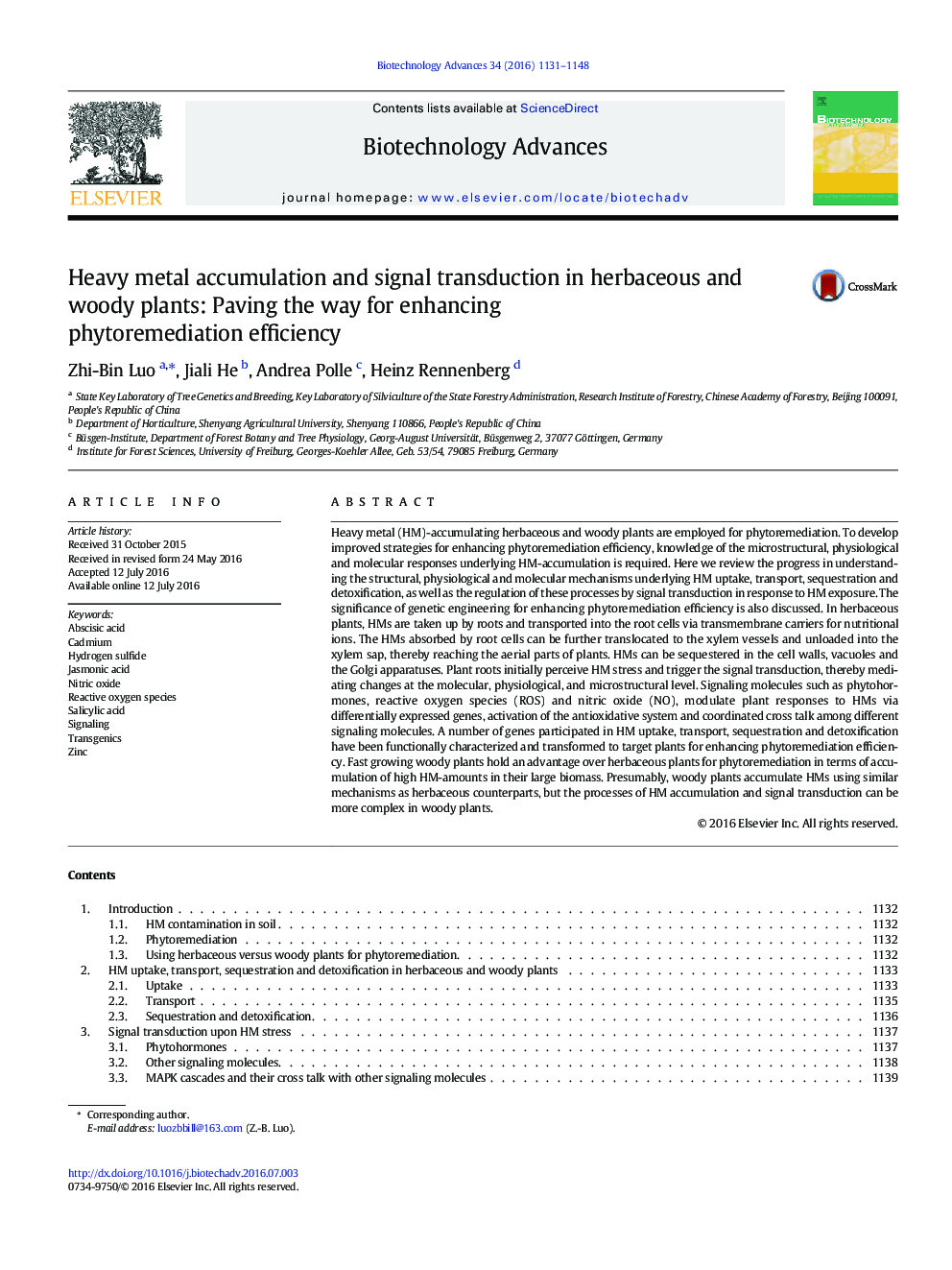| کد مقاله | کد نشریه | سال انتشار | مقاله انگلیسی | نسخه تمام متن |
|---|---|---|---|---|
| 4752564 | 1361333 | 2016 | 18 صفحه PDF | دانلود رایگان |
Heavy metal (HM)-accumulating herbaceous and woody plants are employed for phytoremediation. To develop improved strategies for enhancing phytoremediation efficiency, knowledge of the microstructural, physiological and molecular responses underlying HM-accumulation is required. Here we review the progress in understanding the structural, physiological and molecular mechanisms underlying HM uptake, transport, sequestration and detoxification, as well as the regulation of these processes by signal transduction in response to HM exposure. The significance of genetic engineering for enhancing phytoremediation efficiency is also discussed. In herbaceous plants, HMs are taken up by roots and transported into the root cells via transmembrane carriers for nutritional ions. The HMs absorbed by root cells can be further translocated to the xylem vessels and unloaded into the xylem sap, thereby reaching the aerial parts of plants. HMs can be sequestered in the cell walls, vacuoles and the Golgi apparatuses. Plant roots initially perceive HM stress and trigger the signal transduction, thereby mediating changes at the molecular, physiological, and microstructural level. Signaling molecules such as phytohormones, reactive oxygen species (ROS) and nitric oxide (NO), modulate plant responses to HMs via differentially expressed genes, activation of the antioxidative system and coordinated cross talk among different signaling molecules. A number of genes participated in HM uptake, transport, sequestration and detoxification have been functionally characterized and transformed to target plants for enhancing phytoremediation efficiency. Fast growing woody plants hold an advantage over herbaceous plants for phytoremediation in terms of accumulation of high HM-amounts in their large biomass. Presumably, woody plants accumulate HMs using similar mechanisms as herbaceous counterparts, but the processes of HM accumulation and signal transduction can be more complex in woody plants.
Journal: Biotechnology Advances - Volume 34, Issue 6, 1 November 2016, Pages 1131-1148
